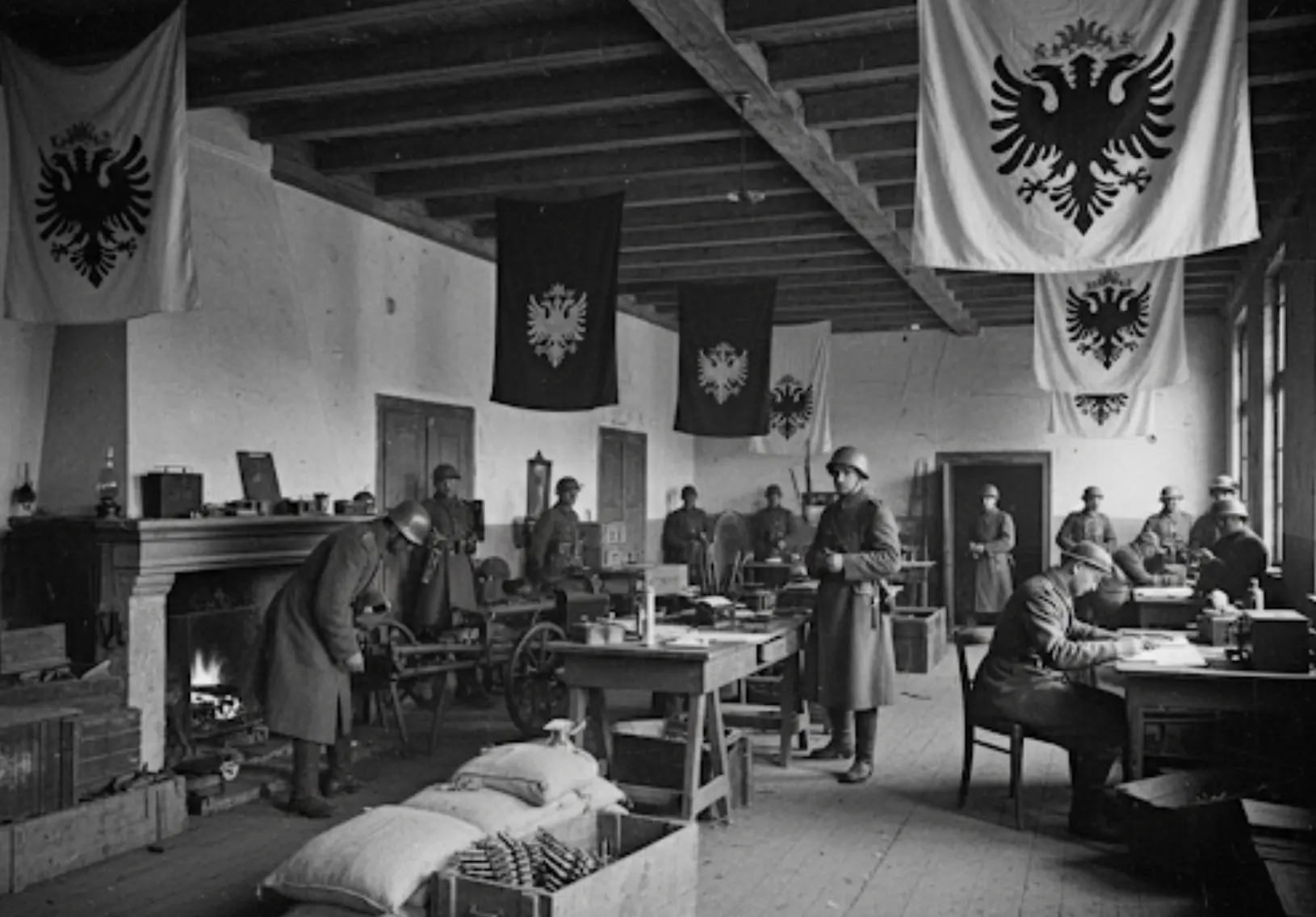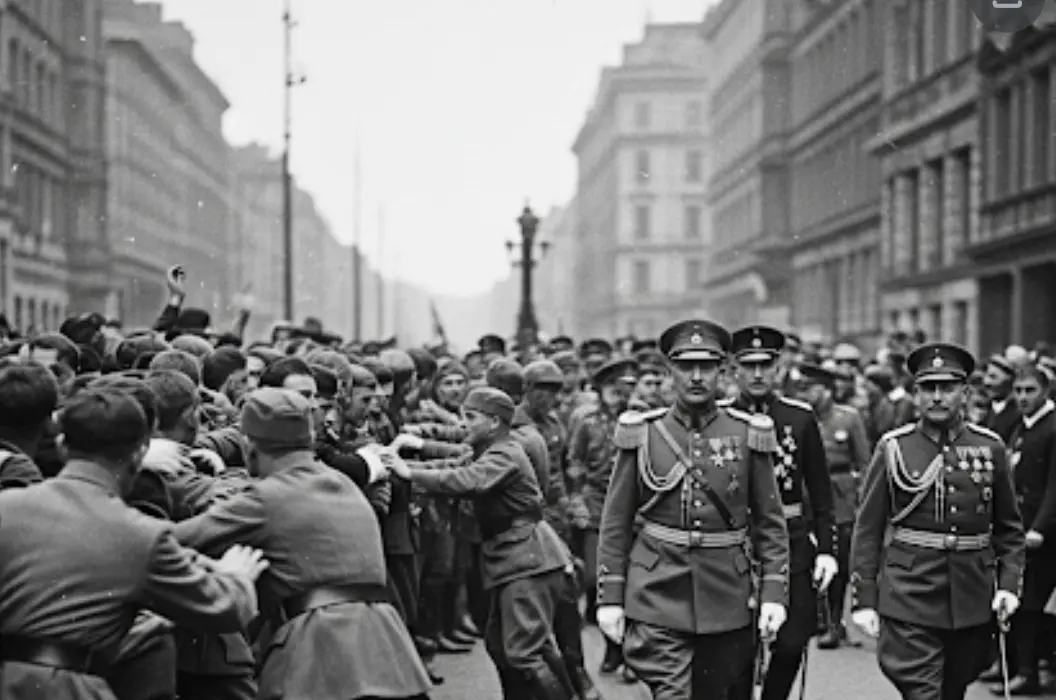The Kresimirian Unification War (1918–1921) was a civil and secessionist conflict fought in the aftermath of the collapse of the Vosti Empire. The war was waged between the Centralist Faction, which sought to create a unified, independent Kresimirian state based on the Sanctian Church, and the Eastern Pravoslavic Confederacy, which aimed to unite the southern, Pravoslavic-majority territories with the newly independent Boskenmark. The conflict ended in a Centralist victory, leading to the formation of the Divine Republic of Kresimiria and the controversial incorporation of the Bosken-majority district of Moraviskameja into the new state.
Background
For centuries, the lands of Kresimiria and Boskenmark were subject states within the vast, multi-ethnic Vosti Empire. This federal empire allowed its constituent duchies and regions significant local autonomy, and it permitted the practice of various religions. This led to a distinct religious divide: the Sanctian Church (the precursor to modern Kresimirianism) was dominant in the northern and central Kresimirian heartlands, while the Pravoslavic Faith was prevalent in the southern territories and throughout Boskenmark.
In 1918, after years of internal decline and external pressures, the Vosti Empire collapsed, creating a power vacuum. Two main factions emerged from the former Kresimirian territories:
The Centralist Faction was based in the city of Sinj, and led politically by the Revolutionary People’s Council, a body of six ideologues including Filip Novak. They envisioned a modern, centralized republic defined by the Sanctian faith, harkening back to the historical unity under King Kresimir IV. Their military forces were commanded by General Dominik Lončar, and Diviner Kresimir Basic formed a religious justification for the unification.
The Eastern Pravoslavic Confederacy: A coalition of nobles and community leaders from the Southern and Eastern regions of the Empire, most notably Moraviskameja. Sharing close ethnic and religious ties with the Boskens, their primary goal was to secede from the newly formed lands of Kresimiria, under threat of religious persecution, and join the newly formed Bosken Federation.
Hostilities began in late 1918 as both sides scrambled to secure territory, weapons, and popular support.
Course of the War
1918-1919: Initial Clashes
 Centralist central command in Sinj city, 1918
Centralist central command in Sinj city, 1918
The initial phase of the war was characterized by disorganized, regional fighting. The Centralists quickly consolidated their control over the western and central districts, using the city of Sinj as their base of operations. The Confederacy, meanwhile, secured the southern territories, including the strategically important city of Brod Moravice in Moraviskameja, and began receiving supplies and volunteer fighters from Boskenmark.
1920 Winter: The Siege of Ravna Skrad
The turning point of the war came in the winter of 1920. General Lončar’s Centralist army launched a major offensive to capture the city of Ravna Skrad, a vital transportation hub that lay on the religious fault line between the two factions. After a brutal, months-long siege, the Centralist forces broke the Confederacy’s lines and captured the city. The defeat at Ravna Skrad was a devastating blow to the Confederacy, shattering its main army and opening the path into its southern heartlands.
 General Dominik Loncar (left), Commander of the Kresimirian Army, entering Ravna Skrad
General Dominik Loncar (left), Commander of the Kresimirian Army, entering Ravna Skrad
1921 Spring / Summer: Bosken Intervention and Final Offensive
Facing imminent collapse, the Confederacy formally requested military intervention from the Bosken Federation. Bosken troops crossed the border in early 1921 to reinforce the beleaguered Confederacy forces. However, the intervention came too late. General Lončar launched a final, decisive offensive, outmaneuvering the combined Pravoslavic-Bosken army and pushing them back across the Moraviskameja border. By May 1921, Centralist forces had secured all disputed territory, and the Confederacy’s leadership surrendered.
Aftermath and Legacy
The war formally ended with the signing of the Treaty of Sinj. The victorious Centralists, led by the Revolutionary People’s Council, proclaimed the establishment of the Divine Republic of Kresimira on May 27, 1921, and finalised its new constitution.
The most significant and lasting consequence of the war was the drawing of the new Republic’s borders. The Pravoslavic Bosken majority in Moraviskameja, the region was incorporated into Kresimiria. This decision was justified by the Centralists on historical grounds but was seen as an act of conquest by the local population and by Boskenmark. This “Moraviskameja Question” immediately sowed the seeds of future conflict, fueling decades of resentment and leading to the formation of Bosken separatist groups like BRC-21, who did not recognise the authority of the Treaty of Sinj, and maintained that Moraviskameja was independent territory. The war cemented a deep-seated enmity between Kresimiria and Boskenmark that would define the region’s politics for the next century.